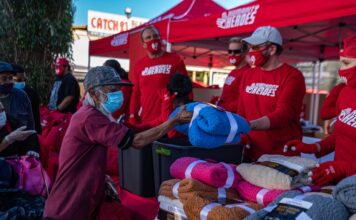Let’s face it: The market is saturated, and the novelty of a once-taboo substance is gone. Cannabis and hemp have have become just like any other consumer product. This means competition is fierce and will get fiercer. Once big-money corporate America entered the domain, the game changed. Now, marketing is a game of differentiation and focus. Your values, tone of voice, look and feel, promise, and purpose are the DNA that build your brand’s identity. You must communicate that identity to consumers in a way that will encourage them to buy your product instead of the competition’s. To do that, I use a program I call the W System.
The W System comprises four questions you should answer as you plan your market approach. Implement the answers in your marketing, branding, and sales efforts, and you’ll increase the return on your investment.
Who is your brand?
Until you really know your brand, you can’t define a message that will create cost-effective customer acquisition and retention. Your brand is not the product you sell or the service you offer, so leave those out of the definition.
Think of your brand as a person. What’s its gender? Age? How does it present itself in public? Is it happy, strong, cool, intellectual? What would your brand wear—street style or three-piece suits? What car would your brand drive—or would it ride a motorcycle or bicycle, take public transportation, or maybe even walk? What social media does your brand use? Where does it gets its news? What are its values and beliefs? Does your brand engage in in-the-trenches manual labor or high-tech work? Maybe your brand is all about partying, or maybe it’s focused on charity and giving back to the community.
The more you know about your brand’s personality and values, the better. Focus is important. Clarity is important. Both drive better business results.
In research published in Harvard Business Review, Karen Freeman, Patrick Spenner, and Anna Bird noted 64 percent of consumers who said they have a relationship with a brand cited shared values as the primary reason.
Who is your core customer?
“Who am I targeting?” is not an easy question. while working with different industries on three continents over more than twenty years, the biggest mistake I have seen is not knowing who composes the target market. If you try to sell to everyone, you will end up selling to no one.
In marketing and advertising, knowing exactly who is in your target audience is super-important; otherwise you shoot in all directions and spend marketing money aimlessly. When you are not focused, you are not effective.
When it comes to cannabinoids, demographics such as age, gender, and location are less important than psychographics, or the reasons people do things—the needs and desires that motivate consumers to take action. People of different ages and socioeconomic classes have the same need for a tincture or a cream, so think in terms of customers’ pain points, their needs, how they want to feel, what makes them tick, their values and beliefs, and problems you can solve for them.
Remember: You are not the only one selling a pain-relief cream. Saying yours contains the best strains and oils won’t differentiate your product from the competition’s because 1) most consumers can’t tell one strain from another, and 2) your competitors say the same thing. Instead, target a specific group of people who seek a specific type of pain relief. If you’re targeting middle-class suburban seniors who enjoy an active family life but have arthritis pain, you might use marketing imagery that depicts a grandpa smiling while he plays with his baby grandson or a high-energy family outing. Conservative fonts, wholesome packaging design, and a tagline that promises a happy life with the ones they love will support the message you’re trying to convey.
Research by Epsilon indicates 80 percent of consumers are more likely to do business with a company if it offers personalized experiences, and 90 percent find personalization appealing. If you don’t know exactly who you are selling to, how can you personalize your message? Stop thinking about your product or service and start thinking about your customers. Your business is not about you—it’s about them.
What, exactly, do you sell?
Your product is not what you really sell. Does Harley Davidson sell motorcycles? Does Ralph Lauren sell clothing?
Consumers seldom buy product features. They buy because they want to feel a certain way, they want to think about themselves in a certain way, or they want other people to perceive them in a certain way. What you really sell is what makes the difference between a great company and all the others. Sell a story, a promise, a lifestyle, a narrative.
January 22, 1984, will forever live in the annals of advertising history, because on that day, during Super Bowl XVIII’s halftime, Apple aired the first Macintosh commercial. The product never appeared in the stark black-and-white video, which depicts a world in which everyone dresses, looks, and thinks alike. At the end, a young woman in bright athletic garb throws a hammer through a movie screen on which a larger-than-life authoritarian figure indoctrinates the populace. Then simple words appear: “On January 24th, Apple Computer will introduce Macintosh. And you’ll see why 1984 won’t be like ‘1984.’” The commercial ran only once, yet within a month the then-small and -unknown company sold 70,000 units. To this day, the ad is considered one of the most powerful ever made.
That’s how you sell a product.
Why should consumers buy from you?
Here’s the question on every consumer’s mind when he or she considers any interaction: “What’s in it for me?”
Let me say something that may sound harsh: No one except you cares about your product. But you can make them care about your product if it helps them live the life they want to live; be the person they want to be. If they want to feel classy, for example, everything about your brand must be classy—packaging, website, marketing materials, tagline, social media content…everything. A consumer might buy once based on a product feature, but they will buy again and again, write positive reviews, tell their friends, and plaster selfies everywhere if you can give them an experience that elicits an emotional response.
To conclude, good marketing and branding come from research and careful consideration of objectives. Don’t settle for marketing’s low-hanging fruit. Dive deeper, until you thoroughly understand your brand, your target market, and your real product. Answering the W System’s questions and acting on your answers will give you an edge over the competition.
 Dino H. Carter is owner and chief strategist at D Branding, a brand consultancy helping clients develop unique strategies to grow market share, deepen brand awareness, and sustain growth. He possesses more than twenty years’ experience in marketing with companies including Levi’s and MTV Europe.
Dino H. Carter is owner and chief strategist at D Branding, a brand consultancy helping clients develop unique strategies to grow market share, deepen brand awareness, and sustain growth. He possesses more than twenty years’ experience in marketing with companies including Levi’s and MTV Europe.


